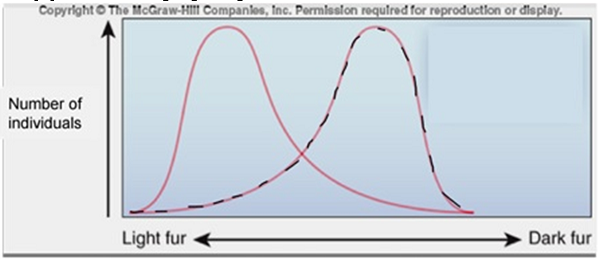Predict the result when a phosphate-containing chemical is released by a factory into a pond
A) All living things will always die in such cases.
B) Eutrophication will occur.
C) Climax species will invade.
D) Predatory fish will increase in population faster than other living things.
B
You might also like to view...
Why is DNA resistant to hydrolysis under alkaline conditions?
A. DNA lacks the 3' hydroxyl on the pentose ring, which would have participated in the hydrolysis. B. Deoxyribose forms furanose rings without oxygen, which makes the ring more stable. C. The 2' hydroxyl of the sugar is directly involved in the hydrolysis reaction, and DNA lacks this group. D. The carbonyl of uracil is directly involved in the hydrolysis reaction and DNA lacks this base. E. None of these choices is correct.
A population of voles (small mammals) live in a shady forest. Originally, the voles are a light tan color, but then a dark brown coloration arises by a new mutation. The darker voles are harder for predators to see in the leaf litter, thus they are less susceptible to predation. After 10 generations the majority of voles in the population are the dark brown color. In the figure below, the solid red line represents the number of light colored individuals before the mutation and the black dashed line represents the number of dark brown individuals after 10 generations. What type of natural selection are the population of voles going through?

A. Directional selection.
B. Stabilizing selection.
C. Diversifying selection (disruptive selection).
D. Balancing selection.
E. Negative frequency-dependent selection.
A(n) increase in the pH of the plasma causes hemoglobin to unload its oxygen
____________________ Indicate whether the statement is true or false.
If a viral host cell has a mutation that interferes with the addition of carbohydrates to proteins in the Golgi, which of the following could likely result?
A) The viral envelope proteins would not be glycosylated and might not arrive at the host plasma membrane. B) The viral capsid proteins would not be glycosylated and might not arrive at the host plasma membrane. C) The viral core proteins would not be glycosylated and might not arrive at the host plasma membrane. D) The virus would be unable to reproduce within the host cell.